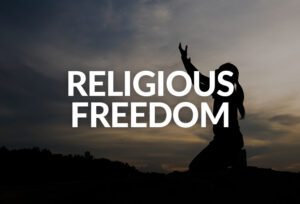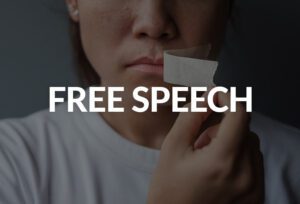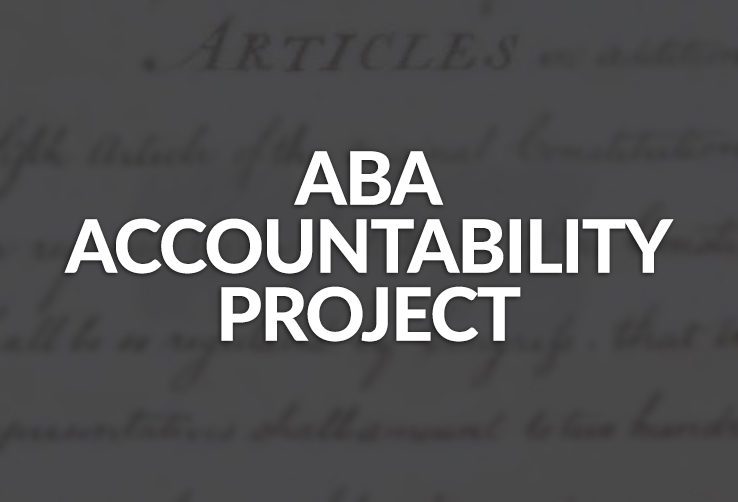
Reed Smith

The Supreme Court decision in Bostock v. Clayton County, which amends Title VII to include sexual orientation and gender identity, has long-reaching applications. The Court cannot say, on the one hand, that “because of … sex” unambiguously includes sexual orientation and gender identity and, on the other hand, that the interpretation of the multitude of statues containing such language presents “questions for future cases.”
Surprisingly, many court watchers have focused on how the Court reached its result as much as the result itself, particularly the Court’s nominal reliance on textualism. Professor Hadley Arkes opines that Bostock shows textualism to be a “morally empty jurisprudence.” In contrast, Ed Whelan adopts and expands on Justice Alito’s description of the opinion as a “‘pirate ship’ sailing under a ‘textualist flag.’” I respectfully depart slightly from both views and would argue that Bostock is an example of “Wonderland Textualism.”
In Alice Through the Looking Glass, Alice asks Humpty Dumpty what he means by “glory.” Humpty Dumpty says that he means a “nice knock-down argument.” When Alice objects that “glory” doesn’t mean “a nice knock-down argument,” Humpty Dumpty replies, “When I use a word … it means just what I choose it to mean — neither more nor less.” In true Wonderland fashion, the Court goes through the textualist exercise of discerning the meaning of words but gives them its own eccentric meaning. The Court’s reasoning misconstrues, redefines, or equivocates on numerous terms key to its decision.
“Sexual orientation”: The question presented in Bostock is whether “discrimination against an employee because of sexual orientation … [is] discrimination ‘because of … sex.’” How one defines “sexual orientation” is a key aspect of the Court’s opinion. Merriam-Webster defines “sexual orientation” as “a person’s sexual identity or self-identification as bisexual, heterosexual, homosexual, pansexual, etc.” The parties also briefed this definition of sexual orientation to the Court. In holding that sexual orientation falls under Title VII’s aegis, the Court reasoned that “if changing the employee’s sex would have yielded a different choice by the employer—a statutory violation has occurred.” Under this reasoning, the ordinary meaning of “sexual orientation” does not fall under Title VII—an employer who treats a homosexual man in the same manner as a homosexual woman has not violated Title VII.
To avoid this result, the Court switches to a different, irregular definition of sexual orientation—one not offered by the parties. The Court redefines “sexual orientation” as whether an individual is male-attracted or female-attracted. Using this definition of sexual orientation, the Court found that sexual orientation discrimination violates Title VII because a man who is sexually attracted to men is treated differently than a woman sexually attracted to men. But this definition of sexual orientation defies the ordinary meaning of the term; the Court’s definition would mean that lesbians and straight men share a sexual orientation. Moreover, there is no history of invidious discrimination against “female- or male-attractedness” that would justify its inclusion in Title VII.
The Court’s equivocal use of this “male- or female-attracted” paradigm also divorces sexual orientation from the Court’s justification of treating sexual orientation as a sex-based characteristic. The Court suggests that a person cannot know their sexual orientation without some reference to their own biological sex; however, an individual can discern whether they are male-attracted or female-attracted without reference to their own biological sex.
“Gender Identity”: Similarly, the question before the Court in Harris Funeral Homes v. EEOC (consolidated with Bostock) was whether “because of … sex” includes “gender identity.” Merriam-Webster defines “gender identity” as “a person’s internal sense of being male, female, some combination of male and female, or neither male nor female.” As commonly used today, gender identity includes nonbinary identities, such as agender, two-spirit, or nonbinary. As with sexual orientation (which also includes nonbinary classifications such as bisexual and pansexual), the Court’s arguments would have a different result if the Court used this common, dictionary-based definition of “gender-identity.” The Court reasoned that “homosexuality and gender identity are inextricably bound up with sex.” Yet, under the standard definition of “gender identity,” which includes nonbinary identities, this is demonstrably false. A person’s identification as having no gender, or some combination of genders, has no connection with the person’s biological sex, much less an “inextricable” one. For example, both men and women can identify as agender, and knowing that someone is agender provides no insight into their biological sex. These nonbinary identities, far from being “inextricably” tied to sex, provide no probative information as to a person’s sex.
To avoid this result, the Court equated “gender identity” with “transgendered status.” Indeed, as Heritage’s Ryan Anderson notes, the Court used the term “transgendered status” 18 times. In contrast, the Court used the term “gender identity” only once, referencing the employees’ argument that sex includes “gender identity.” The Court here adopted the lower courts’ reasoning that “an employer cannot discriminate against an employee for being transgender without considering that employee’s sex.” But if an employer treats agender men and women equally to one another, is that employer in violation of Title VII? The Court’s logic applies only if it redefines “gender identity” and “sexual orientation” to exclude all nonbinary identities and orientations.
“Because of…sex”: One could argue that the Court’s misuse of “sexual orientation” and “gender identity” does not speak to its faithful application of textualism because neither classification appears in Title VII’s text. To this point, I respond, “Exactly.” Neither term is found in the statute, and a textualism that twists the ordinary meaning of words not in a statute to bring them within the statute’s scope is no form of legitimate textualism. Such criticisms are moot, however, because the Court further redefines the key terminology of the statute it construes: “because of … sex.”
Using the definition of “sex” that the Court claims to have employed, “because of … sex” means “because of biological distinctions between male and female.” At oral argument in Bostock, the employees’ attorney conceded that an employer who refuses to hire a person because of their sexual orientation and does not know the applicant’s biological sex does not violate Title VII. Logically, an employer who does not know an employee’s biological sex cannot have biological sex as a motivating, and certainly not, a “but for” factor in its employment decision.
Despite this concession, the Court held that an employer who knows only if the employee is same-sex attracted necessarily discriminates on the basis of sex. Why? Because the employee may have to reference their own sex internally to answer the question. This reasoning speciously attributes that information to the employer as well. The flaw in this logic is easily exposed if one slightly modifies an example used by the Court. The Court hypothesizes a job application that asks homosexuals or transgendered individuals to tick a box “without revealing whether they happen to be women or men.” The Court holds such an application discriminates on the basis of sex because the employee who does not understand the terms “homosexual” or “transgender” cannot understand those words “without using the words man, woman, or sex.” But this example is fatally flawed because it speaks only to employee’s knowledge.
To show this, imagine that the employer’s policy, instead of a prohibition against hiring any same-sex attracted people, states that, regardless of any other factor, it will always hire a gay man, but never hire a lesbian. The employer receives ten applications, numbered 1-10, each of whom have checked the employer’s box indicating that he or she is same-sex attracted. The application contains no other probative information as to whether the applicant is a man or woman. Which of the ten applicants does the employer hire? If Justice Gorsuch cannot answer that question on these facts, he cannot claim that every employer who refuses to hire people for sexual orientation does so “because of biological distinctions between male and female.” The same scenario plays out if one imagines an employer who will always hire transgendered males but no transgendered females.
To close, the Bostock opinion is textualist in form, but not in substance. The Court spends approximately twenty pages analyzing whether Title VII covers “sexual orientation” and “gender identity,” but significantly alters the meaning of those terms and Title VII’s text to reach its result. These Court-created meanings defy the ordinary usage of the terms. We can only hope that Justice Gorsuch’s adventure through the looking glass is a short one.

Mike Schutt
Director, CLS Law School Fellows

Alanna Walker
Grants Coordinator

Michelle Williams
Law Student Ministries Coordinator
GET UPDATES
The views expressed on the CLS Blog are the views of the individual authors and do not necessarily reflect the positions of Christian Legal Society.
The purpose of the CLS Blog is to generate discussion with a free exchange of ideas and opinions.
▦ |CLS - Christian Legal Society © 2024|














































